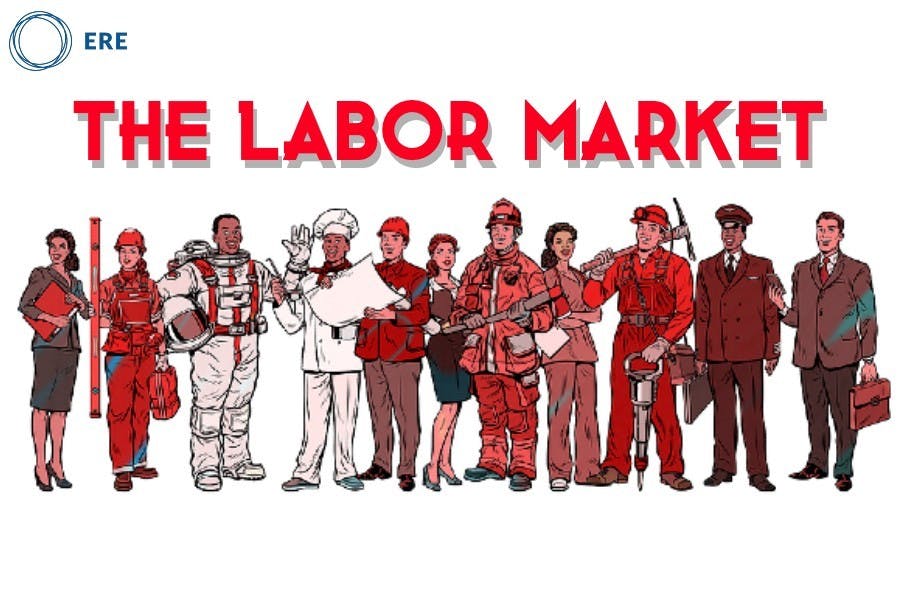How quickly things change. My last post mentioned that salaries are not expected to increase much in 2021. Now it appears wage pressures, caused by inflation, are very likely to emerge this year.
The U.S. has had low inflation for a long time — on average, less than 2% for the last decade. But warnings of inflation are showing up everywhere. A key driving factor is the massive economic rescue package being pushed through Congress, adding about $1.9 trillion of stimulus to the economy.
Even before the package was proposed, a burst of inflation in the short term had become inevitable.
Crudely put, inflation is too much money chasing too few goods. As more of the population gets vaccinated, people will return to their normal spending patterns, likely by the second half of 2021. They are sitting on vast amounts of cash — about $1.5 trillion in savings accumulated during the pandemic — that they will want to spend. As that spending rises, companies will struggle to match supply with demand, causing prices to rise.
The leisure and hospitality industries — restaurants, hotels, and airlines — will regain pricing power as people start to travel and get out more, adding to the overall price increase. However, expanding production in goods or increasing the availability of services to meet demand will be difficult because large numbers of workers in the hardest-hit industries have left the labor-force altogether. Many restaurants, hotels, and retail stores have shut down permanently, shrinking the capacity available to meet increasing demand.
Furthermore, the $1.9 trillion stimulus package comes on top of the bill Congress passed in December providing $900 billion in Covid relief. The combined effect of these two bills will be an additional $150 billion per month of benefit payments and tax credits for much of this year.
To put this in context, incomes lost because of the pandemic are about $30 billion a month below the levels they were before Covid shut down the economy. That’s a 1:5 ratio of incomes lost to benefits provided, which effectively increases purchasing power by a factor of five. That ratio will increase as more people return to jobs lost during shutdowns. Too much money, too few goods.
Inflation Expectations
One would expect that after people go on a spending spree, making up for lost travel and eating out, prices would fall back to normal once much of that accumulated cash is spent. But that may not happen because once prices start to rise, they can trigger sustained pressure to raise incomes, since people may expect them to keep rising.
Actual inflation partly depends on expectations. If most people expect prices to rise by 5% over the next year, businesses will want to raise prices by 5%, and employees will want equivalent raises. Once that genie is out of the bottle, it can be difficult to put it back in.
A wage-price spiral can develop. High inflation raises inflation expectations that pressure employers to raise compensation because employees demand increases to make up for their loss of purchasing power. Employers that pay out more compensation then raise prices to make up for the increase in labor costs, which further pushes up inflation. The cycle doesn’t break until inflation expectations start to drop.
Today inflation expectations are rising, now at 3.05%, which is about double the current inflation rate of 1.4%. Eventually, actual inflation starts to match expectations. “I reject your reality and substitute my own” can take on a whole new meaning if enough people do it.
The Impact on Recruiting
Inflation that starts to make the news raises expectations that candidates have for salaries and wages. Employers that fail to adjust their offers may find it difficult to get talent or find that they have to settle for less qualified candidates.
Smaller employers and those in industries with low margins will find it even more difficult to find and retain employees with inflation rising, especially since the labor force is smaller than what it was before the pandemic set in.
How likely is it that inflation will become more than a short-term nuisance? Many economists of repute are predicting that the risks are high. Some, like Treasury Secretary Janet Yellen, consider the new stimulus package necessary to create jobs and the risk of inflation manageable. She may well be right, but the economy already appears poised for a rebound, making much of the additional stimulus funding unnecessary.
Perhaps nothing bad will happen. But this has happened before, for essentially the same reasons: Inflation surged in the 1970s, reaching 14% in 1980. Then as now, the surge was driven by excessive growth in the supply of money and a goal of full employment.
The cure was painful. The Federal Reserve raised interest rates to 19% (the rate is 0.09% presently) to slow the economy and lower inflation expectations. It worked, but a recession occurred with unemployment reaching 11% before inflation retreated. (The history of that time is well-documented.)
Someone once said that those who cannot remember the past are condemned to repeat it. We may be about to find out just how true that is.
